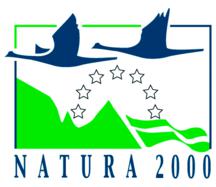

.jpg)
K A M P O S T S A K K I S T R A S

Web-design and development: George A. Constantinou
Copyright © 2017 - Department of Forests



The village of Kampos lies at 790 metres above sea level and its history goes back to around 330AD, when miners engaged in the process of extracting copper ore in the region set up camp by building shelters in the area where they stayed. In time, the copper reserves were exhausted in this particular area and the camp was abandoned, but during this period the village was given the name: Campus which in latin means "camp" - a temporary settlement. After copper mining, the village turned to exploiting the wood the surrounding forest provided with such abundance. Although a lot of the forest was destroyed during the tragic events of the Turkish invasion of 1974 along with it catastrophic forest fires.
The 200 or so permanent residents today still operate one of the seven wood logging factories, as well as tending crops and making the most of what they cultivate. Built in 1913, the bridge over the Kampos river greets you at the entrance to the village, where it is surrounded by tall plane trees. Within the village, you can't help but be charmed by the many multicoloured roses, the ivy plants that dress the sidewalks and the fresh oregano plants that strive to grow from the stone and clay walls. The village is defined by its traditional architecture, which makes use local material such as wood and the local mountain stone. Houses built using older techniques are scattered around the valley, combined with concrete structures that began to appear in the 1970s. Whilst winding your way through cherry and almond tree plantations within the cultivated fields that reach towards the forest boundaries, you'll encounter kiwi plantations, vineyards, and some of the most delicate features of the nature: orchids, cyclamens, honeysuckles, oregano fields, massive laurel and myrtle trees and more so, blooming wild roses.
It's clear to see that the inhabitants of Kampos are highly self-sufficient and perhaps this contributes to the liveliness of the locale. There's the local supermarket, fruit market, along with services such as the forestry department, medical centre and a police station. The tavern and a hotel found in the heart of the village, are a meeting point of all. Soon enough one feels very much at home.
Making essential oils from myrtle, oregano and laurel, or rosewater from specific wild roses, are local pastimes and sources of income that have become an integral part of everyday life. Housewives will tell you that they make tea from cherry stems, and most of them make home - made sweets with rose water and proudly reveal the benefits of their home made ointments made from Cistus and Inula species they collect.
The chirping of nightingale and sound of running water make the perfect backdrop for a stroll along the village's narrow pedestrian streets, which are mostly named after local trees and birds. Wooden double doors are a feature of both old new houses, most - if not all - boasting an internal courtyard. Residences are divided in to six small districts, with the central one surrounding the church being the oldest.
The church can be seen from above from most parts of the village. This is undoubtedly the most important building in the village, due to its historic, religious and cultural value. It was built in 1881 and it is dedicated to Saint Kyriakos. Reflecting the village's reserves of wood, it is also the largest wooden -roofed house of worship on the island.
The road leading out of the village - towards Kykkos Monastery - was laid down in 1808, but there are older tracks which were used by worshipers who would go to the monastery from all parts of Cyprus. However, it is the numerous rural tracks surrounding the village that will give you a real feel for Kampos - Tsakistra basin. Several of these tracks are linked to forest roads which run deep into the forest. Here, ideally with the help of a local guide, you can to venture out for the scattered chapels that sit on local hilltops, or the hidden caves from which miners once retrieved copper by hand.
Visiting Kampos is to take an unforgettable journey into the heart of Cyprus, where tradition, rural beauty and the many delights of the island's stunning countryside are waiting be discovered.
Pictures from: © Ioannis Papadopoulos




.png)

